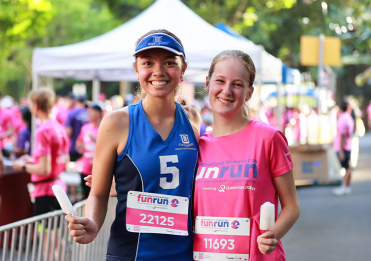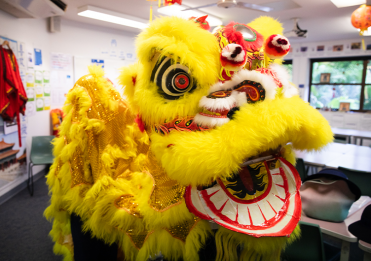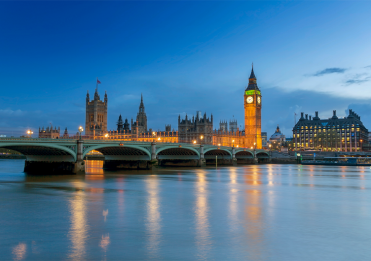As an important way to begin this Australia Day address, as we (among other things) celebrate and value the cultural distinctions and the rich and positive contribution made to Australian society by First Nations people, I would like to acknowledge them as the traditional custodians of the land on which this assembly is taking place. They knew it as Meeanjin (Mee-an-jin). We know it as Brisbane. I recognise the country north and south of the Brisbane River, as the home of both the Turrbal and Jageranations, and in doing so, I pay deep respect to all Elders past and present and future. I am here to offer the Australia Day address, but I’m not sure what Australia Day is. Many people would like it to be a big national party. Others, particularly amongst those of our First Nations people, regard the day as something else entirely. At the very least, many First Nations people, and others who support them, believe that our day of national celebration should be held on another significant, yet to be determined date.
When I was growing up, Australia Day wasn’t really much of a thing. Yes, there was a national holiday to commemorate it, but it didn’t always fall on 26 January. Instead, it fell on the last Monday of January, guaranteeing a three-day weekend. In fact, it wasn’t until 1994 that all states and territories began to celebrate a unified public holiday on the actual day. Records of celebrations on 26 January date back to 1804, but it would take another 131 years before all states and territories, in 1935, adopted the term ‘Australia Day’ (National Australia Day Council, 2021). As a child and as an adolescent, I don’t ever recall doing anything special to celebrate the day. My extended family might have travelled in a convoy of cars for the 20 minutes that it took to drive from Rockhampton to Yeppoon so that we could go to the beach, but that was something that we did frequently anyway. If people gathered on Australia Day, it was as much a celebration of the long weekend as it was of the official public holiday.
Things changed in 1988. That year saw celebrations for the bicentennial of European settlement. With hindsight, and a better understanding of history, it is obvious that society was building towards this celebration but, at the time, it seemed to come out of nowhere. The celebrations exploded with full colour, movement, keepsakes, and patriotism—spectacular and exceptional fireworks displays in every town and city, majestic replica tall ships in Sydney Harbour, commemorative medallions for every school student across the country, and much flag waving. I have a very distinct memory of being invited to a friend’s house for a celebration barbeque. When I arrived, I was struck by the prominence of national emblems adorning their house. On that day, there didn’t seem to be a surface that hadn’t been decorated with either green and gold streamers or the Australian flag—and the air was also decorated with patriotic language proclaiming Australia as the best country in the world by many of the adults there. Given the proliferation of cheap flag-themed decorations in supermarkets and dollar-shops today, and ubiquitous proclamations of what it means to be Australian (and perhaps just as importantly, what it means to be un-Australian) you might ask, ‘so what?’… but, prior to 1988, this version of Australia Day (which, in many ways, seems to be much more in keeping with today’s celebrations) didn’t exist.
I wasn’t particularly comfortable with the overt display of patriotism then, and I’m not particularly comfortable with it now. My level of discomfort reached its peak in 2005 when hundreds of people engaged in aggressive and violent, racially motivated behaviour in what is known as ‘The Cronulla Riots’. A great many of these self-described patriots wrapped themselves (both figuratively and literally) in the Australian flag and engaged in behaviour that sought to intimidate, exclude, and harm other Australians. The images were disconcerting and those who saw them will forever see the Australian flag, and the Southern Cross, in a slightly different light. If the people who participated in the Cronulla riots were patriots, as they claimed to be, then I knew for sure that I wasn’t.
Don’t misunderstand me. There is nothing wrong with honouring our national symbols. They belong to all of us, but they should never be used as symbols of extremism. At their best, these symbols can be used to rally communities and society around worthwhile causes. They can collect, unite, and embrace. But, of course, at the other end of the spectrum, these symbols can be used to exclude, intimidate, and drive a sense of otherness. When utilised like this, these symbols turn patriots into nationalists. In this ugly version of patriotism, the tribal adherents (who, seeing the country with unquestioning pride, and with deep-seated prejudices) are unable to acknowledge or accept criticism of their version of Australia.
If that version of patriotism is unappealing, where does that leave someone who, like me, loves their country but is not interested in blindly waving the flag?
Singer-songwriter and author, Billy Bragg, has a neat way to think about the love that he has for his country… he compares it to a parent’s love for their child, and I paraphrase his words here:
I love my country, in a similar manner to which I love my child. My daughter is part of me, and I want the best for her; I want her to flourish, to be at ease with herself, to be admired. But I recognise that she isn’t perfect, and when she makes mistakes I am compelled to speak out and correct her—I can’t merely accept and applaud everything that she does just because she is my daughter. Why not? Because I love her, and I don’t want her to grow up to be a spoiled brat whom others despise. I want her to understand that there are consequences for her actions in the wide world. When she lives up to my expectations, I am immensely proud. And when we’re apart, I think of her every day (Bragg, 2006).
This is the love that I have for Australia.
How did I get to this place of love?
I’m not sure what Australia Day is, but I know what my idea of the best kind of Australian is. With fewer restrictions over the New Year’s break, I was able to spend time with my extended family—and it’s a big extended family. My parents are each one of ten children so, lots of uncles and aunts, and lots of cousins. As is often the case when we meet, we talk about my grandmother, Alice Reddy. She passed away in 1992 aged 81, but her influence on the family is so profoundly positive that her presence is never far from the heart of family life. When I think about the life that I want as an Australian, I think about the life that she created for herself and her family, and the way that she went about doing it. Every day she showed my family what it meant to be a good person and live a good life. She was a supporter of the Australian branch of the Mothers’ Union, because of her son she contributed to and was supported by the Endeavour Foundation (an organisation that supports people with intellectual disability), she was a life-long member of the Queensland Country Women’s Association, and her home was always open to people, no matter their background. She did these things without any sense of entitlement, and with no certainty of reward.
She believed in fairness, hard work, inclusivity, community, generosity, optimism, and compassion. To my mind, these are the quintessential values that (I hope) define us as Australians. Our devotion to these values affects the way that all Australians interact with each other.
My grandmother was born in 1911, so perhaps it is difficult for us, with our modern sensibilities, to imagine the life that she lived. I have no desire to retreat. No desire to go back in time. But perhaps we can still be informed by the values of the past. Particularly when these values are relevant to the best that Australia can be in the future. If we aspire to these values, we can love our country in a way that transcends the blind flag-waving of the unthinking patriot. Instead, we can be progressive patriots—people who love their country as a parent loves their child.
I’m not sure what Australia Day is. The focus of the day has changed over time, and it will continue to change. In its current guise, Australia Day is a time of community events. According to the National Australia Day Council (2021) more than 16 000 people became new citizens on Tuesday 26 January. It is a day of celebration for most, and many of you will have joined family and friends, spending valuable time with each other. But, for a growing number of Australians, the day is synonymous with the disenfranchisement of First Nations people, and it’s important that their voices are heard also. I urge you to find time on Australia Day, and the days around it, to reflect on the values that you would like to see manifest in this country.
Fairness, hard work, inclusivity, community, generosity, optimism, and compassion. I think these values, as lived by my grandmother, are a pretty good place to start.
Happy Australia Day.
References
Bragg, B. (2006). The progressive patriot: A search for belonging. Black Swan.
National Australia Day Council. (2021). Retrieved from https://www.australiaday.org.au/




